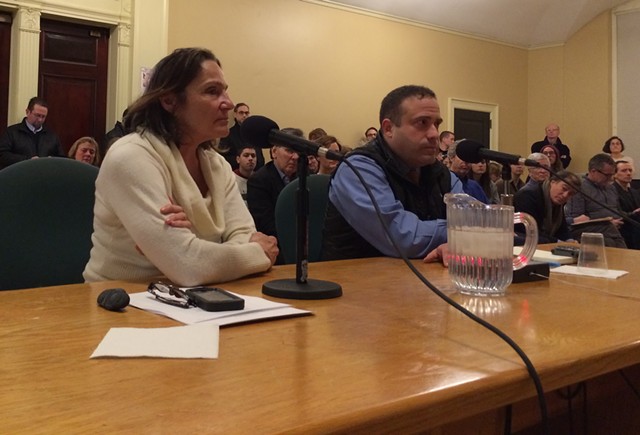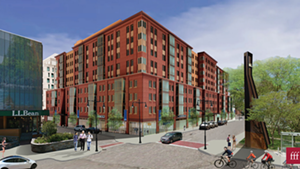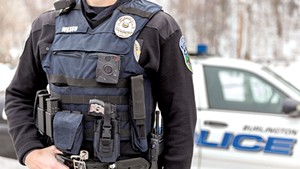
- Alicia Freese
- Stephanie Seguino and Burlington Police Chief Brandon del Pozo field councilors' questions about race data.
This post was updated at 12:15 p.m. on April 12, 2016 with additional background and details.
After studying four years of traffic-stop data in Burlington, University of Vermont economics professor Stephanie Seguino has concluded that there’s evidence of police officers targeting black drivers.
Seguino, who conducted the analysis with Cornell professor Nancy Brooks based on data recorded by officers from 2012 through 2015, presented findings to the city council Monday night.
Among them: Black drivers were more likely than their white counterparts to get pulled over in Burlington, and, once stopped, they were less likely to get off with just a warning. White drivers got warnings 69.4 percent of the time, whereas black drivers got warnings only 61.6 percent of the time.
Black drivers were more likely to be searched after being stopped: 3.3 percent of the time, compared to 1.1 percent of the time for white drivers.
But searches of black motorists turned up contraband only 46.2 percent of the time, whereas searches of white drivers produced illegal items 63.5 percent of the time. That could mean white drivers were getting under-searched or black drivers were getting over-searched, Seguino suggested. The difference in arrest rates between races, she noted, was not statistically significant.
Seguino drew attention to the disparity in search rates, while Police Chief Brandon del Pozo downplayed it, noting that the total number of searches was small. Just 52 black drivers were searched during the time period.
Seguino’s analysis also revealed what she characterized as “quite a substantial disparity in stop rates by officer.” On the high end, 15 or 16 percent of an individual officer’s stops involved black drivers; on the low end, black drivers made up less than 2 percent of an officer’s stops.
Unlike other states, Vermont doesn’t ask people to disclose their race on their driver’s licenses. But in 2014, the state began requiring police officers to record this information during traffic stops.
Seven Days reported in January that it was unclear whether police departments were complying with the new law, in part because no one was charged with making the data publicly available.
The Vermont Senate is currently reviewing a bill the House passed in March that would require departments to submit their data to the Crime Research Group of Vermont, which would maintain a central database open to the public.
During her presentation to the council, Seguino noted that there were significant gaps in the data collected by Burlington police officers, which, she said, made it difficult to complete a thorough analysis. But compared to some other departments, Burlington is actually ahead of the curve in that it’s been collecting traffic stop data for years, which del Pozo has pledged to publish online every quarter.
Acknowledging that some of Seguino’s findings were “troubling,” he emphasized the importance of making this data transparent — both within the police department and to the public.














Comments (9)
Showing 1-9 of 9
Comments are closed.
From 2014-2020, Seven Days allowed readers to comment on all stories posted on our website. While we've appreciated the suggestions and insights, right now Seven Days is prioritizing our core mission — producing high-quality, responsible local journalism — over moderating online debates between readers.
To criticize, correct or praise our reporting, please send us a letter to the editor or send us a tip. We’ll check it out and report the results.
Online comments may return when we have better tech tools for managing them. Thanks for reading.